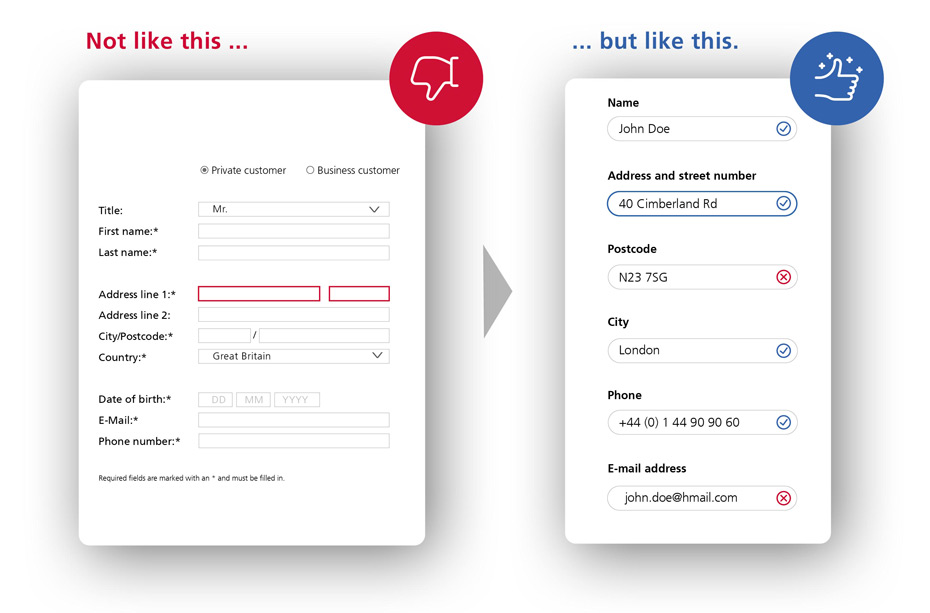6 reasons why you should NEVER have street and house number captured in different fields in your form!

Street name and house number belong together like pitch and brimstone. Nevertheless, they are recorded in separate fields in many online forms. Our study of the top 100 web stores in Germany shows explicitly that 62 percent of the forms provide for separate recording. Apparently, this is even a purely German "special curl" - in other countries, joint recording has long been best practice.

So what is the argument for recording street names and house numbers in a common field?
- The vast majority of users consider street and house number as one coherent unit. A separation is rather perceived as annoying and disturbs input flow and usability.
- An additional step is required - another jump from the street field into the house number field must be taken. Especially on mobile devices, each field change is extremely annoying, wastes time and conversion.
- Most of the browsers offer a so-called autocomplete feature. This feature allows users to save their contact data and to automatically insert the address into the form. Prerequisite for this is that the fields in the form are provided with the correct HTML Autofill Field Name Tokens. Appropriate tokens exist for the address line. This line contains the street as well as the house number (“street-address” respectively “address-line1”); they do not exist for street names and house numbers in separate fields, though. What means in consequence: Users can not use this feature adequately and must enter or correct the data manually if you request street and house number in separate fields in your form.
- There are also street names that consist of numerical terms. For instance, the quadrants in Mannheim:
Hans Müller
N 5 3
68161 Mannheim
In this case, how should the customer or the data steward in a call center decide about the following question: which part belongs to the street name and which figure is the house number? This is only one example of many in which it is not easy to make an accurate decision. Especially for international addresses, this is a common error source.
- Do you alternatively accept a P.O. Box address within your process? For example, for the billing address. In this case, within a one-field acquisition it would be sufficient to adapt the heading of the field. This is not only a user-friendly method, but also a method which requires minimal layout effort.
- The recording of international addresses is also of importance. For instance, in our neighboring country France the house number is written before the street name. If the form provides for separate recording, the layout needs to be adapted country-specifically. When there is only one data entry field, it is sufficient to adjust the field description.
Conclusion and recommended action
There is no rational reason why street address and house numbers should be captured in different fields within an address form. When your data model requires an appropriate separation of information, do not burden the users with this separation. Instead, start using an appropriate software solution that is doing the separation of information automatically and correctly even in special cases in the background. Many solutions can accept the information in a compact form and split it into individual elements if required – including street name and house number. Another advantage of an integrated software solution: The address can and should generally be checked for validity when entering the data.
